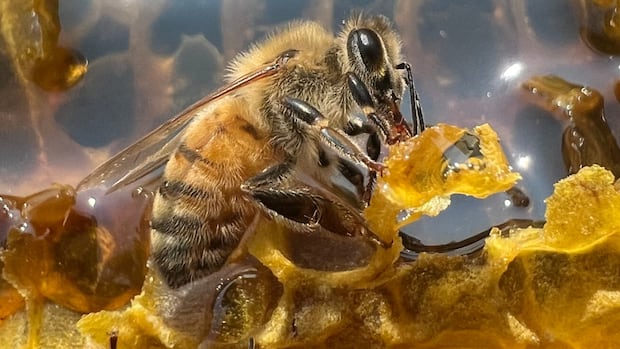How an orca held captive at the Vancouver Aquarium helped changed the world’s view on killer whales

It’s been 43 years since the death of Skana, the Vancouver Aquarium’s first resident orca, who experts believe changed the way people viewed killer whales and spurred a global movement in whale conservation.
Today, the resident killer whales that frequent the waters off British Columbia’s South Coast are endangered, protected and beloved. But whaling once thrived in the area, particularly during the ’60s and the ’70s.
“Killer whales were typically seen through the eyes of fear,” said Chloe Robinson, director of the whales initiative at Ocean Wise, a non-profit conservation group that conducts research on killer whales and other marine mammals.
“It was actually Skana who helped people overcome that fear and fall in love with them.”
Featured VideoChloe Robinson, director of the Whales Initiative at Ocean Wise, joins Dan Burritt to talk about how attitudes towards cetacean captivity have changed.
In his book, Orca: How We Came to Know and Love the Ocean’s Greatest Predator, author and University of Victoria historian Jason Colby says killer whales were considered “not just as vermin species but potentially dangerous” creatures to be hunted and eliminated.
“It started with slaughter by fishermen, then followed by captivity for entertainment,” he said in a previously recorded interview with CBC.
The waters in southern British Columbia and Washington state were the world’s principal source of captive killer whales for marine theme parks between 1964 and 1976, according to Colby.

In 1967, a pod of orcas was brought for display at the Vancouver Boat, Trailer and Sports Travel Show. Among the pod was a 1,360-kilogram, 4.3-metre-long female, later named Skana — the Haida term for killer whale.
First captured in Puget Sound, Skana was later sold to the Vancouver Aquarium, where she lived out her life.
She remained at the aquarium for 12 years, where she garnered thousands of admirers, young and old, who came to watch her perform and swim in her aquarium home. Skana died on Oct. 5, 1980 from an infection.
According to Colby’s book, Skana made her most consequential impact on Paul Spong, a New Zealand-born scientist hired by the aquarium to study her.
North by Northwest14:14Meet Moby Doll: The Killer Whale Who Changed the World
Featured VideoMeet Moby Doll: The Killer Whale Who Changed the World
His research would eventually lead him to work with Greenpeace and launch a worldwide campaign against commercial whaling.
The relationship between the New-Zealander scientist and the killer whale is detailed in Erich Hoyt’s book Orca: The Whale Called Killer.
After studying Skana for over a year, Spong concluded that killer whales are, according to an excerpt from the book, “an incredibly powerful and capable creature, exquisitely self-controlled and aware of the world around it, a being possessed of a zest for life and a healthy sense of humour and, moreover, a remarkable fondness for and interest in humans.”
In 1970, Spong decided to investigate orcas in their natural habitat, realizing that in contrast to wild orcas, Skana seemed lonely and bored in her small pool. He often confronted the Vancouver Aquarium about releasing Skana and would later go on to publicly denounce keeping whales in captivity, likening it to torture, according to Hoyt.
Greenpeace aimed to end commercial whaling
Greenpeace’s official website states Spong brought Bob Hunter, Greenpeace’s founder, to see Skana at the aquarium in 1974, to share her plight and that of other great whales held captive around the world.
On April 27, 1975, a team of Greenpeace activists launched the world’s first anti-whaling campaign from the docks of Vancouver, which eventually ignited a global “Save the Whales” movement and helped secure an international ban on commercial whaling.

Ocean Wise’s Robinson said it was ironic that a captive orca changed the world’s view on whaling forever.
“It was through [Skana’s] captivity we really learned how social, intelligent and emotional these animals are and how unethical it actually really is to be keeping them in captivity,” she told CBC News in the interview with Dan Burritt.
The Vancouver Aquarium, however, continued keeping orcas captive despite many protests against it.
In 2017, after years of protests from animal advocates, the Vancouver Park Board voted to ban keeping whales and dolphins in captivity at the aquarium.
Ocean Wise, which owned the aquarium at the time, followed the decision with a lawsuit against the city, claiming the ban resulted in millions of dollars in lost revenue and constituted a breach of contract.
Ocean Wise later relented and committed to a cetacean ban in 2019 while also dropping the lawsuit.
Today, Ocean Wise conducts conservation-oriented research on killer whales and other marine mammals.




